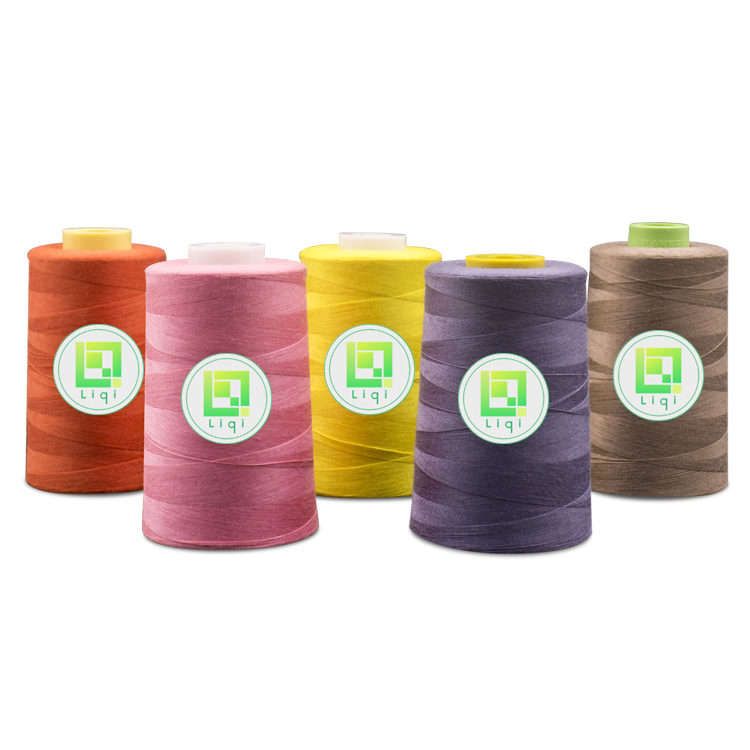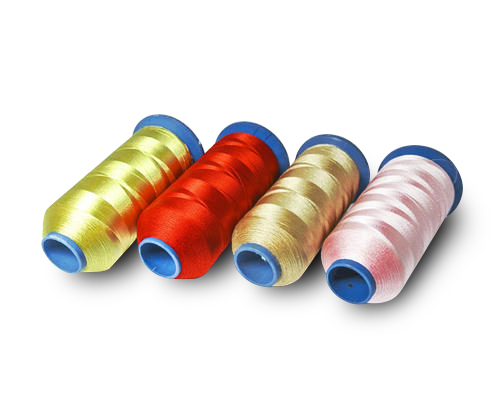
Basic Textile Concept: Fiber and Yarn
Textile fibers
1. Definition: Fiber is a natural or synthetic filamentous material, textile fibers refer to the fibers used for textile cloth.
2. Textile fiber characteristics: textile fiber has a certain length, fineness, elasticity, strength and other good physical properties. It also has good chemical stability, such as cotton yarn, wool yarn, silk yarn, hemp thread and other natural fibers are ideal textile fiber threads.
3. Classification of textile fibers: natural fibers and chemical fibers.
Natural fibers include plant fibers, animal fibers and mineral fibers.
A. Plant fibers such as cotton thread, hemp thread and fruit fiber thread.
B. Animal fibers such as wool, wool-free, silk thread.
C. Mineral fibers such as asbestos.

Chemical fibers include regenerated fibers, synthetic fibers and inorganic fibers.
A. Recycled fibers such as viscose thread fibers and acetate fibers.
B. synthetic fibers such as nylon thread, polyester yarn, acrylic thread, spandex thread, vinylon yarn, polypropylene thread, etc.
C. inorganic fibers such as glass fibers, metal thread fibers, etc.
4. Textile properties of common textile fibers:
Wool thread: Good hygroscopicity, elasticity, wearability, insect resistance, suitable acidity and metal-bonded dyes.
Silk thread : good moisture absorption, breathability, gloss and wearability, suitable for acid and direct dyes.
(3) Cotton thread: breathable, hygroscopic, wearable, insect-resistant, suitable for direct reduction of azo, basic media, sulfur, reactive dyes.
4. Viscose thread fibers: hygroscopicity, good air permeability, bright color, wide source of raw materials, low cost, close to natural fibers, suitable for dyes and cotton.
Polyester thread: Fabric, stiff, crisp, good shape retention, wear resistance, dimensional stability, easy washing and quick drying, suitable for disperse dyes, diazo disperse dyes, soluble VAT dyes.
Nylon thread: good wear resistance, poor air permeability, suitable for acid dyes, disperse dyes.
Acrylic yarn fibers: good fluffy, fur-like, suitable for disperse dyes, cationic dyes.
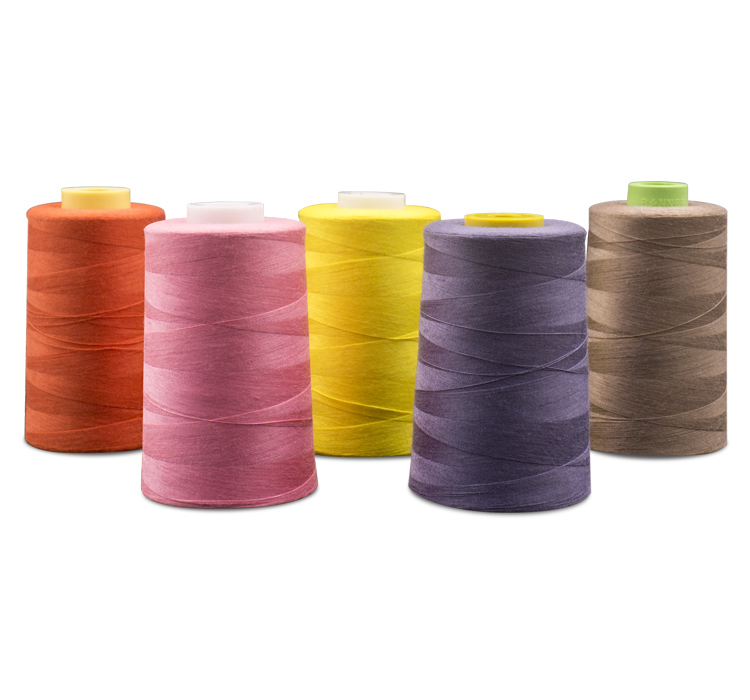
Identification of fibers
1.Identification methods:
(1)The methods of identification include hand feeling, visual measurement, combustion, microscopy, dissolution, drug coloring and infrared spectroscopy. In practical identification, it is often necessary to use a variety of methods to synthetically analyze and study the results.
(2) The general identification steps are as follows:
A. Firstly, natural yarn/thread fibers and chemical fibers are identified by combustion method.
B. If natural fibers are used, plant fibers and animal fibers are identified by microscopic observation. If chemical fibers are used, the differences in melting point, specific gravity, refractive index and solubility of the fibers are distinguished one by one.
C. When identifying blended thread fibers and blended yarns, it is generally possible to identify several fibers by microscopic observation, and then identify them one by one with appropriate methods.
D. For dyed or finished yarn fibers, dyeing peeling or other appropriate pretreatment is usually necessary to ensure reliable identification results.
2. Combustion properties of common fibers:
Fibre
Near Flame Phenomenon
In the Flame
After leaving the flame
smell
Ash
Cotton thread
Near Flame Immediate Combustion
burning
Continuous burning with afterglow
Burning paper flavor
Ash has little soft black ash.
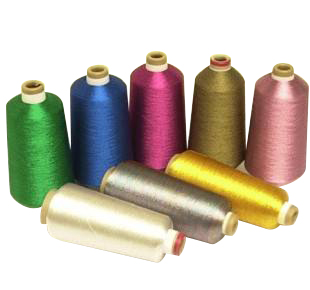
Hair
Fusion flame
Fusion and Combustion
Refractory self-extinguishing
Burning smell
Fragile, crisp, fluffy and black
Silk thread
Fusion flame
Silk voice
Refractory self-extinguishing
Burning smell
Fragile, crisp, fluffy and black
Polyester fiber thread
Near-flame melting
Drop
Foaming and Continuous Combustion
Weak fragrance
Hard round, black, light brown
Acrylic fiber
Burning near flame
Fusion and Combustion
Fast-burning spatter
Weak fragrance
Hard round, irregular or beaded
3. Fiber Calculating Method
(1)Fixed length system:
A. Tex: The weight of a 1000-meter yarn/thread at a given moisture regain is called a special number.
Formula: TEX=(G/L)*1000
In formula: G is yarn weight (g), L is yarn/thread length (m).
B. Daniel: The weight of 9000 meters of silk at a given moisture regain is called the number of denier.
Formula: NTEX=(G/L)*9000
In formula: G is the weight of silk (g), L is the length of silk (m).
(2) Restructuring:
A. Public Branch Number (Public Branch): The length metres of a gram of yarn (silk).
Formula: NM(N)=L/G
In the formula: 1 is the length (meter) of yarn (silk) and G is the weight (gram) of yarn (silk).
B. Inch count: The number of 840 yards of a pound of yarn.
Formula: NE(S)=L/(G*840)
In formula: L is the length (yard) of yarn (silk) and G is the weight (pound) of yarn (silk).
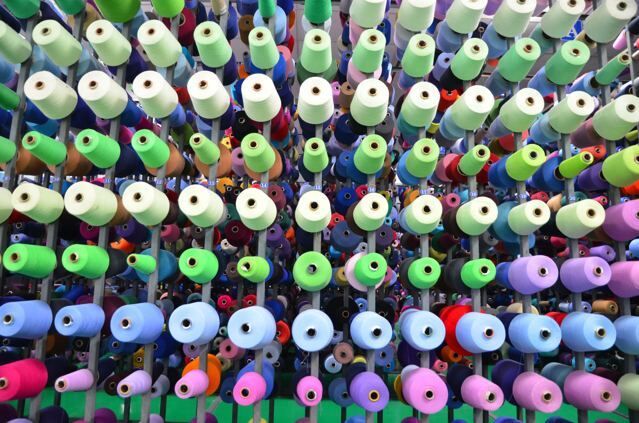
4. Common Material for Bedding
(1) Cotton yarn: 36TEX (16S), 28TEX (21S), 18 *2TEX32S/2, 15TEX 40S, 14 *2TEX (42S/2), 10 *2TEX (60S/2)
Polyester yarns and cotton yarns: 20TEX (30XS), 15TEX (40S), 13TEX (4/S)
